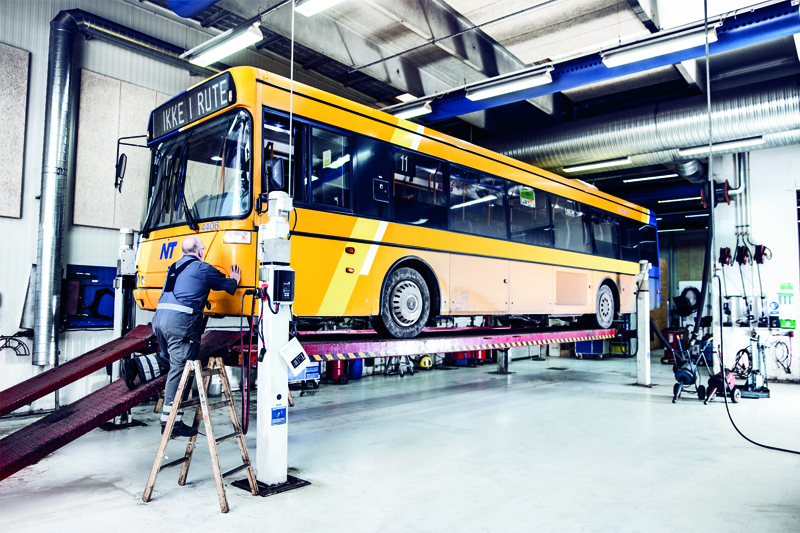
With the discovery that 49% of buses entering the workshop have a battery requiring attention, CTEK provides best practice advice on how to manage a bus fleet’s batteries.
Research by CTEK has revealed that 49% of buses entering the workshop has a battery requiring attention – by this the company means that the battery needs charging or replacing. This alarming figure presents huge challenges to bus companies; battery replacements are proving costly and battery related failures waste time, resources and more importantly, can affect a company’s profit and reputation.
In response, CTEK has produced a number of top tips on how best to approach battery management for a bus fleet:
It’s all about 12.4V
Batteries should be kept above 12.4V at all times to protect against the risk of sulphation. This occurs when the battery is left undercharged (and drops below 12.4V), and the electrolyte solution begins to break down, converting into lead sulphate crystals that coat the battery plates, reducing the battery’s ability to accept and hold a charge.
Don’t rely on the alternator
Buses, in particular those making frequent drops, are more susceptible to battery failure. Every time the vehicle is started, amperage is drawn from each battery and if the next stop is a short distance away, the alternator won’t have the time or capability to replace the energy taken from the battery. Over the course of a day, a bus could stop and restart in excess of 30 times; the charge within the battery will become lower and lower. It’s a myth that the alternator can bring the battery up to maximum capacity and short journeys often mean that the alternator is working flat out all of the time, with no hope of even coming close to charging the battery.
Technology
The fitment of idle control to modern buses is a double-edged sword; whilst reducing the company’s carbon footprint and saving fuel, it has had a massive impact on the battery workload.
It’s all about balance
It’s generally acknowledged within the industry that the best way to maintain batteries in a 24V series is to charge each 12V battery individually. The reason for this is that over time, the two batteries become ‘out of balance’; with one battery at the front of the circuit absorbing all the loads placed on it, the second battery has a slightly easier life. This leads to an imbalance between the two batteries, meaning they are not performing well together. The individual testing of each battery – to establish a clear picture of battery health – and the use of two 12V chargers will restore battery balance and bring each battery back to its full capacity, without the need to disconnect any vehicle wiring.
Introduce a battery management programme
Testing a battery or charging a battery is still viewed as ‘fault finding’ – only carried out if a fault is reported or the vehicle fails to start, but this is too late!
This is why a battery management programme is so important to today’s bus workshops. Regularly testing and charging batteries every time they enter the workshop will improve fleet reliability, identify battery problems early, reduce battery failures and battery replacements; causing the knock-on effect of increased workshop efficiency and minimised costs.








